Piecing Problems with Your Sewing Machine?
What to do before taking it for repair – DIY solutions
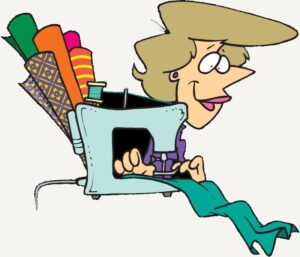
Solving Piecing Problems on Your Sewing Machine
1. Rethread Your Machine
First, try taking the thread out of your machine by cutting the thread at the spool and pulling it through the needle. Rethread the machine and try again. Even if you are sure that is not the problem. I have no idea why this works, but it often solves the problem. Are you using a Featherweight? Remember that those thread from right to left.
When threading your machine, be sure to put the top part of the spool up. This isn’t always as obvious as you might think. To determine which part of the spool is the top, hold the spool horizontally by the top and bottom. Unroll about a foot of the thread. If the thread hangs freely, you unrolled it from the top. If it twists back on itself, you unrolled it from the bottom.
Why do you need to pull the thread out through the needle? Because going in the opposite direction can put unnecessary strain on the tension discs and other internal mechanisms. When you rethread the machine, double-check your tension settings. Here is a tension chart from the Choosing the Right Thread article.
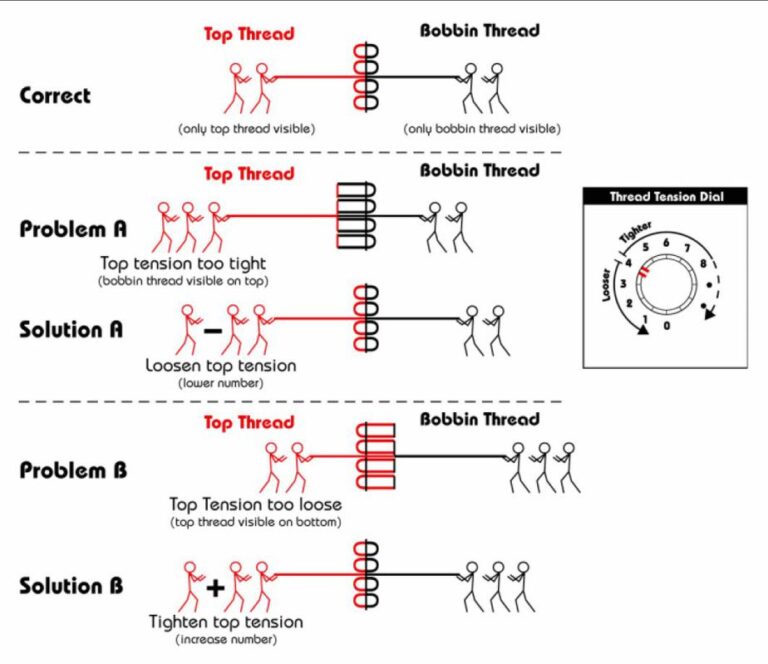
If your stitches are uneven, skipping, or your fabric puckers, tension is almost always the culprit. Remember to always adjust the upper tension of your machine with the foot down. It may not register the change if it is up. Practice different settings on a scrap of fabric before going on to the next troubleshooting steps.
2. Change Your Needle and Thread
Are you using old or inexpensive thread? Some sewing machines are very fussy about that sort of thing. Read our article on Choosing the Perfect Sewing Machine for more.
Try replacing the needle with a new one. A Universal 80/12 needle is a good needle for quilting fabrics. Maybe you are using the wrong needle size or perhaps there is a burr that you can’t see. Did you install the needle properly? Usually, the flat side goes toward the back, but not always. If your needle is breaking, it might be bent slightly. This is usually caused by pulling or pushing the fabric through the machine rather than letting the feed dogs or the walking foot do the work.
As a general rule, always select the needle size to accommodate the thickness of the thread being used and the needle point and scarf style to accommodate the type of fabric. If your thread is shredding, the needle is too small. Here is an article on Choosing a Sewing Machine Needle for Your Project.
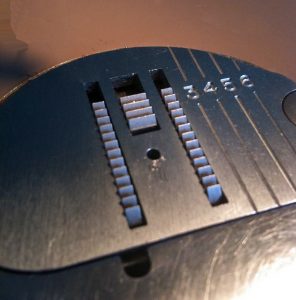
Did you accidentally lower your feed dogs? There’s usually a switch or lever on your machine to raise them back up. Next, adjust the presser foot pressure. Most machines have a dial or setting for this – try increasing the pressure and see if that helps. If your machine doesn’t have an adjustable presser foot pressure, you might need to always use a walking foot.
3. Bobbin Jams
If your fabric seems to be jamming, creating a birds nest of thread in the bobbin area, it could be that the bobbin was wound improperly. Prewound bobbins are extremely convenient and come in a huge variety of colors, but if the thread type doesn’t match the spool type, you might have problems. Then again, some machines perform better with thinner thread in the bobbin. You have to experiment to find out.
Before you adjust the bobbin tension, read this article by YLI Threads on Mastering Bobbin Tension.
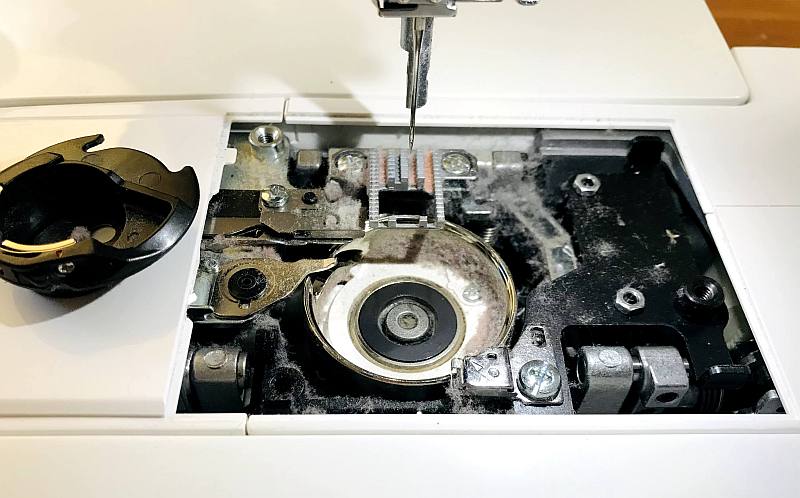
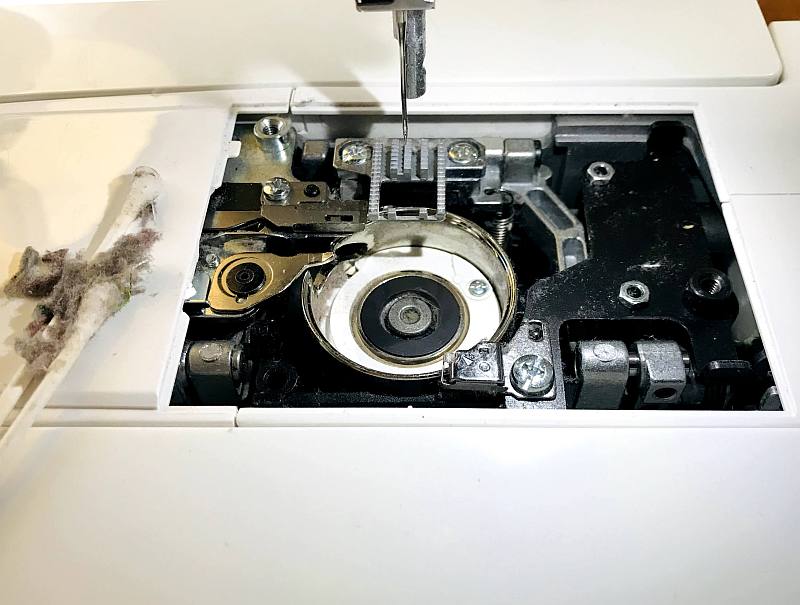
While you have the machine open, dust out the bobbin case. Not with compressed air, that will just force the dust into tiny places. A q-tip or tiny brush will be fine. When you put the bobbin back in the machine, make sure it is facing correct direction so the little hook catches the thread. If you aren’t sure, check your owners manual. Many of them are online now.
Notice the Bobbin Genie in the picture on the right. These are slick Teflon disks that you drop into the bottom of your bobbin case to help keep your stitching smooth.
If your fabric is getting jammed in the needle hole, change to the straight stitch plate if your machine has one. If not, try making your stitch length a little shorter then starting your stitching on a spare piece of fabric. When you are done, sew off on another spare piece of fabric. You could also try try holding the top and bottom threads firmly behind the machine before beginning to sew.
Is Your Machine Making Weird Noises, or Won’t Turn On at All?
Don’t give up hope yet. Turn your machine off and unplug it completely. Unplug both the foot and the power cord from the machine and the wall. If your cord is frayed, or smells burned, it’s time for a new one. Does your machine have a fuse? If so, change it. Is the outlet working? Plug in a light or radio to check. If you are using an extension cord, try a different one.
Plug everything back in firmly. Try making a few stitches. If you are still hearing clunking or whining noises, take your machine apart as best you can and look for loose things – a screw or a belt. Does your machine have oiling points? Use sewing machine oil at those points.
If all else fails…
Take your machine back to an authorized dealer for that brand. They may know of a recall or other problem typical for your machine.
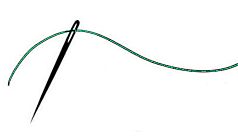
Don’t forget to sign up for the newsletter! Once a week, I send updates on quilt-related information I have found while wandering the web. This might be an inspiring article, a tip or tutorial I have discovered (or written), and occasionally exclusive offers & discounts as well as immediate access to the secret page of free patterns, guides, and printables. You can follow my page on Facebook, or join the Make Believe Quilters group, too.
